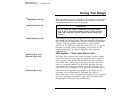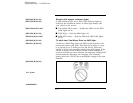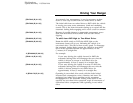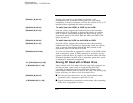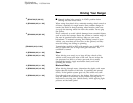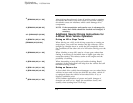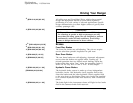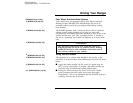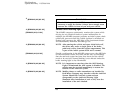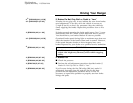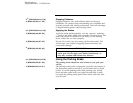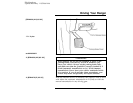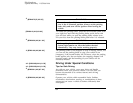
Driving Your Ranger
177
*
[DR21310(ALL)05/95]
All utility-type and Four-Wheel Drive vehicles have special
design and equipment features to make them capable of
performing in a wide variety of off-road applications. Specific
design characteristics give them higher centers of gravity than
ordinary passenger cars.
*
[DR21325(ALL)08/95]
RWARNING
Utility and four-wheel drive vehicles are NOT designed
for cornering at speeds as high as passenger cars any
more than low-slung sports cars are designed to perform
satisfactorily under off-road conditions. Avoid sharp
turns or abrupt maneuvers in these vehicles.
%
*
[DR21400(ALL)03/95] Brakes
*
[DR21500(ALL)01/93]
Front Disc Brakes
*
[DR21600(ALL)06/95]
The front disc brakes are self-adjusting. They do not require
service other than periodic inspection for pad wear.
*
[DR21900(R )10/94]
Rear Drum Brakes
*
[DR22000(R )08/95]
The rear drum brakes are self-adjusting. Automatic adjustment
occurs when the brakes are applied while “backing up.” If
normal operation does not include much backing, adjust the
brakes when they seem “low,” using the procedure under If
Brakes Do Not Grip Well or Pedal is “Low” in this chapter.
*
[DR22100(ALL)11/89]
Hydraulic Power Brakes
[DR22200(ALL)08/94]
The hydraulic brake system is made up of two independent
hydraulic circuits. One hydraulic circuit supplies fluid to the
front disc brakes and the other hydraulic circuit supplies fluid
to the rear drum or disc brakes. These two circuits are supplied
by a common hydraulic brake fluid reservoir, with a fluid level
sensor.
*
[DR22300(ALL)11/89]
The brake light in the instrument cluster will light for low brake
fluid in the common brake fluid reservoir.
File:10undrr.ex
Update:Wed May 1 13:52:06 1996





